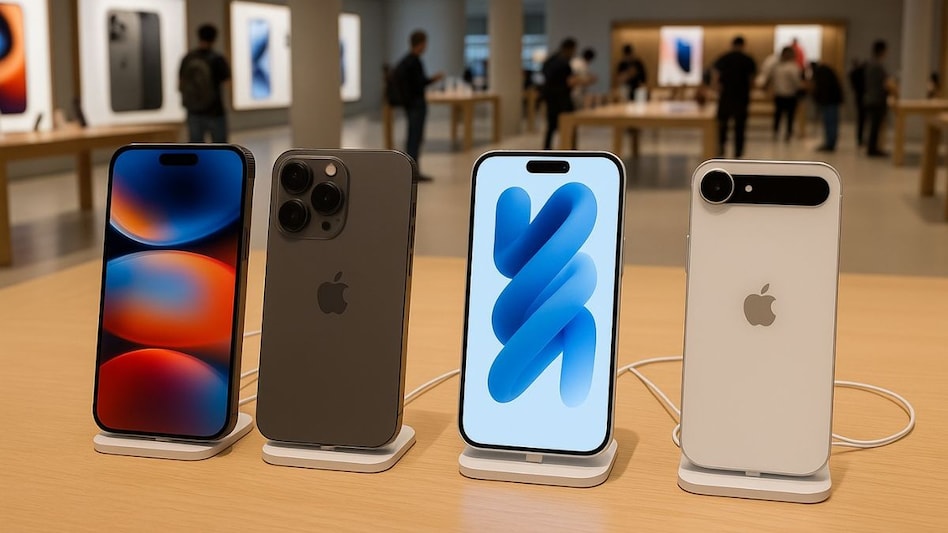
Will Trump's tariffs affect iPhone 17 prices? Apple has a plan to stop iPhone price hike
As the iPhone 17 launch approaches, Apple is proactively addressing the financial pressures stemming from escalating international tariffs. Recent reports indicate that the tech giant is implementing significant cost-reduction strategies, including supplier negotiations, to avoid transferring steep price increases to consumers. The imposition of tariffs by the U.S. government on Apple products, particularly those manufactured overseas in China and India, has raised concerns about potential price hikes. Former President Trump has indicated the possibility of a 25% tariff on iPhones not produced domestically, leading analysts to predict an overall increase in iPhone 17 prices of 4-6% globally. In the U.S., the base model may start at $899, with premium versions likely facing even higher price tags depending on tariff outcomes and component sourcing. In an earnings call earlier this year, Apple acknowledged that tariffs are impacting its finances significantly, costing the company approximately $900 million every quarter. To counter these financial strains, Apple is engaging in strategic negotiations with its suppliers, particularly focusing on reducing costs for expensive components. Apple is currently in discussions with display manufacturers such as Samsung Display, LG Display, and BOE, seeking substantial reductions in OLED panel prices. This specific component accounts for over 10% of the total production costs. Reports suggest that Apple has already secured price cuts from LG Display, while talks with Samsung are ongoing. Additionally, negotiations are taking place with LG Innotek, which provides advanced camera modules for the Pro models. Apple is also considering alternative suppliers like BOE for crucial parts if current partners do not meet pricing expectations. This year's negotiations are particularly notable for the scale of discounts being pursued, reflecting the economic challenges faced in major markets. To further mitigate tariff impacts, Apple has significantly increased its iPhone assembly operations in India. Production has surged by 53% year-on-year in the first half of 2025, with exports approaching 24 million units. The company aims to manufacture 60 million iPhones in India by 2025, up from 42 million the previous year, intending for most iPhones sold in the U.S. to be produced in India by 2026. As part of its strategy to prepare for impending U.S. tariff deadlines in June 2025, Apple has transported millions of iPhones from India and China to American warehouses, allowing it to stockpile devices at pre-tariff prices. While Apple has not disclosed specific pricing for the iPhone 17, industry insiders speculate that the company's multifaceted approach to reducing costs indicates an intention to maintain stable prices for consumers at launch. Instead of outright price hikes, Apple may focus on enhancing perceived value, a tactic it has previously employed in similar situations. The exact impact of these strategies on iPhone 17 prices will be revealed when Apple unveils its latest offerings later this September.
Google's Quick Share Integrates with Apple's AirDrop for Seamless File Transfers
In an unexpected yet exciting development, Google has enhanced its Quick Share feature to now support file transfers wit...
TechCrunch | Nov 20, 2025, 18:30
Joby Aviation Accuses Archer of Corporate Espionage in New Lawsuit
Joby Aviation has taken legal action against rival Archer Aviation, claiming that the latter utilized stolen information...
CNBC | Nov 20, 2025, 20:50
Unleash Your Creativity with Mixup: The Fun New AI Photo Editor
A talented team of former Google employees, known for their innovative 3D design app Rooms, has introduced an exciting n...
TechCrunch | Nov 20, 2025, 19:10
Economic Indicators Raise Questions on December Rate Hike as Nvidia's Surge Stalls
Recent employment statistics have complicated the outlook for a potential interest rate reduction in December. Analysts ...
CNBC | Nov 20, 2025, 19:45
WhatsApp Introduces New Status Update Feature Echoing Instagram Notes
WhatsApp has unveiled a new feature reminiscent of Instagram Notes, designed to enhance user interaction within the popu...
TechCrunch | Nov 20, 2025, 21:50